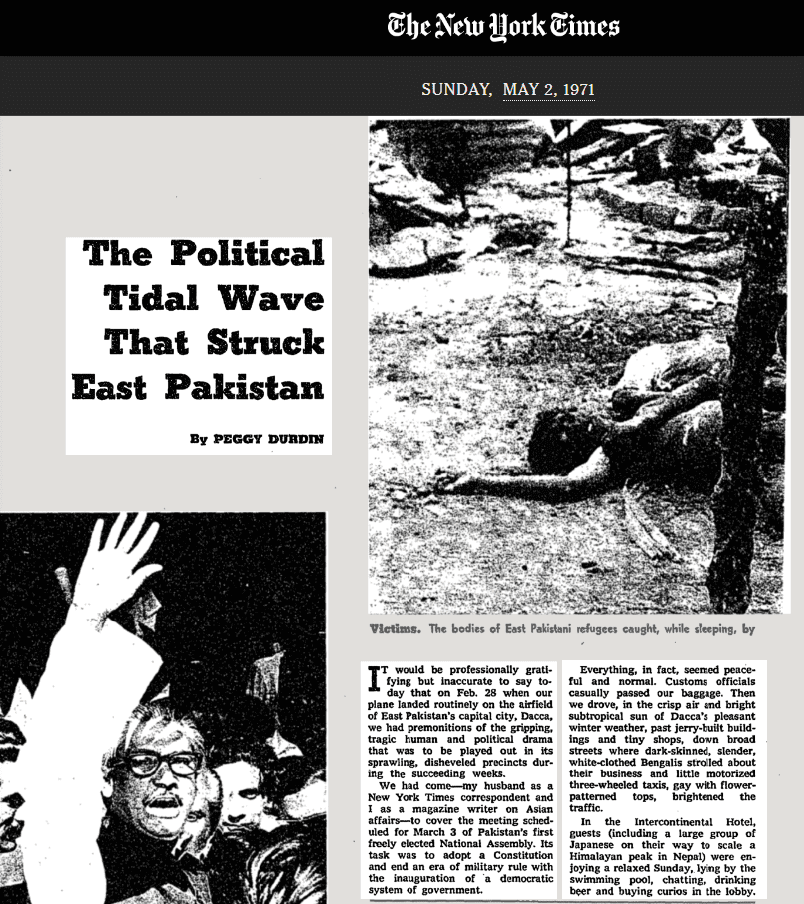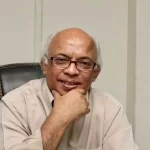Awami League must survive better, through returning to its old reputation — that of an inclusive organisation reaching out to all citizens of Bangladesh, that of a body of dedicated men and women ready to reassert their principled faith in democracy based on secularism and socialism reinforced by Bengali nationalism.
On 23 June 1949, history took a new, decisive and enlightening turn in South Asia. It was to leave the political landscape in our part of the world reshaped, indeed reconfigured.
The Beginning
Seventy-four years ago, a band of courageous men, driven by the mission of ensuring that politics ensured the greater good of the greater number — Moulana Abdul Hamid Khan Bhashani, Yar Mohammad, Shamsul Haque, Sheikh Mujibur Rahman and, of course, Huseyn Shaheed Suhrawardy — went forth to give shape to a liberal political organization in Pakistan. Their names are today engraved in the Bengali consciousness.
These men, grown acutely aware of the growing authoritarianism of the ruling Muslim League, thought it necessary to break loose of the organisation which had spearheaded the struggle for Pakistan and come forth with the Awami Muslim League. The goal was democracy. The objective was to reassure the people of Pakistan, in both wings of the country, that they had a political alternative to fall back on in their yearning for pluralistic politics.
Today, at this remove in time, it is necessary to remind ourselves that the place of the Awami League in Bangladesh’s history has been an enviable one. As the party observes its founding anniversary this year, it is well and proper to look back at the story it has scripted for itself since June 1949. There is pain and then there is pleasure in that story. There is the record of the huge advances made by its leaders over the decades; and there are the demonstrations of pettiness that have prevented a good number of its leading lights from transforming themselves into leaders on a nationwide scale.
In the beginning there were the men who felt early on in Pakistan that the Muslim League was swiftly turning into a feudal, self-serving organisation. And thus was the Awami Muslim League forged into shape, a party of Muslim League dissidents who believed that the genesis of Pakistan, its objective of democracy, was under threat at the hands of Mohammad Ali Jinnah’s mediocre but grasping successors.
But the Awami Muslim League did not or would not replace the Muslim League, in that strictly communal sense of the meaning. The spur that pushed it into taking a new path along the forked road of politics was the growing nature of the language movement in East Bengal. February 1952 was to be a watershed. By the middle of the decade, the party would reach out to all classes and all denominations of citizens, as the Awami League. There was boldness in a jettisoning of the term ‘Muslim’ from its name. Pakistan, after all, was a Muslim state, implicit in whose philosophy was the second class nature of its Hindus, Christians, Buddhists, tribals and others.
Having shed its communal skin, the Awami League became the force to beat in public opinion at election booths. Its leader Suhrawardy assumed a pre-eminent role at the centre. In the province of East Bengal-turned-East Pakistan, the Awami League was to be either the ruling party or a powerful opposition, embodied by men like Ataur Rahman Khan. And yet it would face a major crisis in terms of ideology. Suhrawardy, naively suggesting that the 1956 constitution had given East Pakistan ninety-eight percent autonomy, then gave foreign policy a patently pro-Western sheen and slant and substance. An outraged Moulana Bhashani walked out, to reinvent himself as the chief of a new organisation, the National Awami Party (NAP). That was post-Kagmari 1957. The Awami League was in crisis.
The Six Points …
The Awami League was much sinned against in the decade-long period of Field Marshal Mohammad Ayub Khan between October 1958 and March 1969. Banned under martial law, it would re-emerge in 1962 but only as part of an alliance of opposition political parties. Placed under arrest and then freed, a shaken Suhrawardy left the country, to die in Beirut in 1963. Earlier, a leading figure of the party, Shamsul Haque, went missing along the way, figuratively speaking. He would die sad and forlorn. Today, not many in the party remember or talk about him, which is a pity.
Meanwhile, power in the party clearly was beginning to pass into the hands of a radical group of young leaders headed by Sheikh Mujibur Rahman. In early 1964, months into Suhrawardy’s demise, Mujib revived the Awami League, taking it out of the opposition National Democratic Front (NDF). It had rediscovered the need to go it alone in national politics.
A defining moment for the Awami League came in February 1966, when Sheikh Mujibur Rahman placed a Six-Point plan of regional autonomy for Pakistan’s federating provinces at a conference of opposition leaders in Lahore. It left the remnants of the old party leadership, personified by the likes of Nawabzada Nasrullah Khan, horrified. It created consternation among the other opposition parties. And it pushed President Ayub Khan into threatening to employ the language of weapons against the party.
Zulfikar Ali Bhutto, Pakistan’s foreign minister, challenged Mujib to a public debate at Dhaka’s Paltan Maidan over the Six Points. The cerebral Tajuddin Ahmad, general secretary of the Awami League, took up the challenge. In the event, an intimidated Bhutto failed to turn up. But that did not stop the regime from going ahead with its plan of trying to eliminate the Awami League. Mujib, along with his young associates, was once again in prison by May 1966. That did not prevent Mizanur Rahman Chowdhury and Amena Begum, two young leaders of the party, from organising an unprecedented general strike in support of the Six Points throughout East Pakistan on 7 June 1966.
By January 1968, Sheikh Mujibur Rahman would be dubbed the principal accused in the Agartala Conspiracy Case instituted by the regime against him and thirty-four Bengali civilian and military personnel. His party was under relentless assault. Increasingly subjected to brutality, the party struggled to hold on despite being pushed to the ropes. It took the blows patiently. A year later, it was marching back to life in refreshing freedom as popular support replenished its energy. A free Mujib, once the conspiracy case had been withdrawn by a beleaguered Ayub regime, emerged in his new avatar as Bangabandhu. He travelled to Rawalpindi for a round table conference, a leader on the march, the de facto spokesperson of his Bengalis.
Electoral Triumph …
Bengali support for Sheikh Mujibur Rahman and his party came through the electoral triumph of December 1970. Poised to take power as the ruling party in Pakistan, it saw once again conspiracy directed against the democracy it espoused. The vested politico-military combine in West Pakistan repudiated the election results, seized Bangabandhu and carted him off to solitary confinement and secret trial before a military tribunal in Mianwali. A year later, the Pakistan army, having murdered three million Bengalis and Bengali constitutional politics having graduated to armed guerrilla warfare, Bangladesh emerged as a sovereign People’s Republic.
Less than three years later, Tajuddin Ahmad, the man who had organised and led the battlefield struggle for freedom on Bangabandhu’s inspiration, was shown the door out of government. It was an early sign of a new phase of tragedy which awaited the party. Three and a half years after December 1971, Baksal took over where the Awami League had been. The Second Revolution, as Bangabandhu called it, was in place. Disaster struck only months later. Between August and November 1975, Bangabandhu, most of his family and the four leaders of the Mujibnagar government were gunned down, in a military coup led by the rightwing Awami Leaguer Khondokar Moshtaque Ahmed.

From Darkness to Light
In the darkness between August 1975 and May 1981, it was back to a struggle by the Awami League to reclaim the high ground of politics. Mizan Chowdhury and Dewan Farid Gazi held their factions together. And then it was Zohra Tajuddin who bravely fought on, until Sheikh Hasina took charge in 1981. She took the party back to power twenty-one years after 1975. And Hasina has been there since, as the longest surviving leader of the party.
In all these years since Sheikh Hasina took charge of the party and especially since her assumption of office as Prime Minister, first in 1996 and then in 2009, the Awami League has presided over a remarkable economic transformation in the country. Women’s empowerment is today a fact of life; the nation’s LDC status will give way to a middle income country niche in 2026; industrialization has expanded and so has rural progress; agricultural production has gone up; the government has coped remarkably well with the consequences of the coronavirus pandemic.
In foreign policy, the Awami League has reconfigured diplomacy on a broad basis. It has ensured a balanced and principled approach to its immediate neighbourhood — India, China and Russia — and maintained mutually beneficial ties with the West. It has gone for digitization all over the country and has ensured the growth of such aspects of the economy as exports of readymade garments and remittances from Bengalis abroad.
Despite all the impediments which have come before the Awami League, the centre has held for the party. Ayub Khan gave it a hard time. Yahya Khan proscribed it. Ziaur Rahman and Hussein Muhammad Ershad went as far as they could to keep the party from re-emerging into light. And yet things have not fallen apart.
It has survived. In the years since 1981, a number of its leaders — Shah AMS Kibria, Ahsanullah Master, et cetera — have been murdered. A grenade explosion in August 2004 left scores of party activists dead. Ivy Rahman died. Sheikh Hasina, having survived a murderous assault in Chittagong in the late 1980s, survived again.
Yet the party must survive better, through returning to its old reputation — that of an inclusive organisation reaching out to all citizens of Bangladesh, that of a body of dedicated men and women ready to reassert their principled faith in democracy based on secularism and socialism reinforced by Bengali nationalism.
The Awami League remains the nation’s hope, in the way it has been the embodiment of popular aspirations between its founding seventy-four years ago and the liberation of the land fifty-two years ago. On the probity of its leaders and workers, on their dedication to national causes, rest the future of the party.
In these difficult times, buffeted by winds threatening it from every conceivable direction, the Awami League must navigate its way to higher ground, morally as well as politically, in the way it historically has — in the larger interest of the Bengali nation.
The cover photo has been taken from BBC Bangla.
About the Author

Syed Badrul Ahsan is the Chief Editorial Adviser of The Confluence; a journalist and author. He previously served as the Press Minister at the High Commission of Bangladesh, London and authored a biography on the Founder of Bangladesh, Bangabandhu Sheikh Mujibur Rahman entitled From Rebel to Founding Father: Sheikh Mujibur Rahman.


1 comment
[…] are the ones who brought about an Awami League victory so you could see a constitutional government restored. The hope was that the elected […]